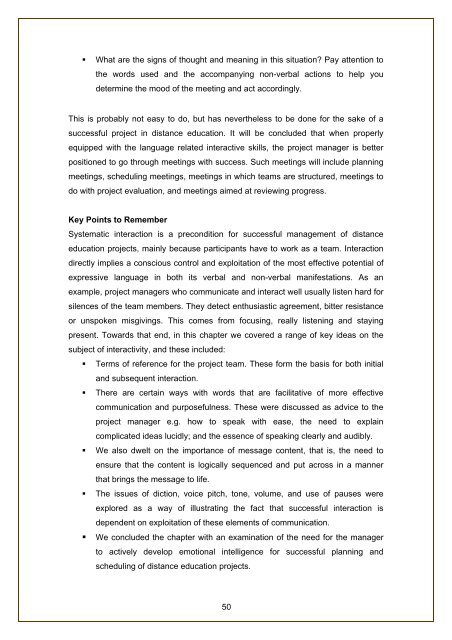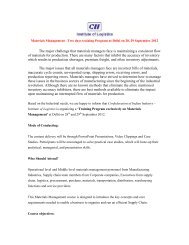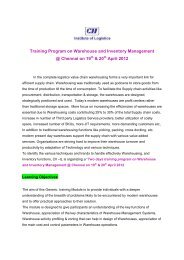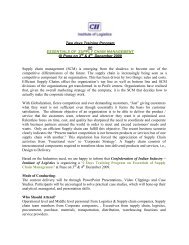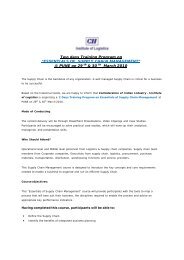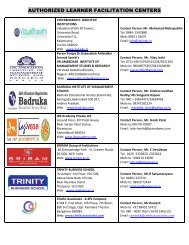successful project management - Commonwealth of Learning
successful project management - Commonwealth of Learning
successful project management - Commonwealth of Learning
Create successful ePaper yourself
Turn your PDF publications into a flip-book with our unique Google optimized e-Paper software.
• What are the signs <strong>of</strong> thought and meaning in this situation? Pay attention to<br />
the words used and the accompanying non-verbal actions to help you<br />
determine the mood <strong>of</strong> the meeting and act accordingly.<br />
This is probably not easy to do, but has nevertheless to be done for the sake <strong>of</strong> a<br />
<strong>successful</strong> <strong>project</strong> in distance education. It will be concluded that when properly<br />
equipped with the language related interactive skills, the <strong>project</strong> manager is better<br />
positioned to go through meetings with success. Such meetings will include planning<br />
meetings, scheduling meetings, meetings in which teams are structured, meetings to<br />
do with <strong>project</strong> evaluation, and meetings aimed at reviewing progress.<br />
Key Points to Remember<br />
Systematic interaction is a precondition for <strong>successful</strong> <strong>management</strong> <strong>of</strong> distance<br />
education <strong>project</strong>s, mainly because participants have to work as a team. Interaction<br />
directly implies a conscious control and exploitation <strong>of</strong> the most effective potential <strong>of</strong><br />
expressive language in both its verbal and non-verbal manifestations. As an<br />
example, <strong>project</strong> managers who communicate and interact well usually listen hard for<br />
silences <strong>of</strong> the team members. They detect enthusiastic agreement, bitter resistance<br />
or unspoken misgivings. This comes from focusing, really listening and staying<br />
present. Towards that end, in this chapter we covered a range <strong>of</strong> key ideas on the<br />
subject <strong>of</strong> interactivity, and these included:<br />
• Terms <strong>of</strong> reference for the <strong>project</strong> team. These form the basis for both initial<br />
and subsequent interaction.<br />
• There are certain ways with words that are facilitative <strong>of</strong> more effective<br />
communication and purposefulness. These were discussed as advice to the<br />
<strong>project</strong> manager e.g. how to speak with ease, the need to explain<br />
complicated ideas lucidly; and the essence <strong>of</strong> speaking clearly and audibly.<br />
• We also dwelt on the importance <strong>of</strong> message content, that is, the need to<br />
ensure that the content is logically sequenced and put across in a manner<br />
that brings the message to life.<br />
• The issues <strong>of</strong> diction, voice pitch, tone, volume, and use <strong>of</strong> pauses were<br />
explored as a way <strong>of</strong> illustrating the fact that <strong>successful</strong> interaction is<br />
dependent on exploitation <strong>of</strong> these elements <strong>of</strong> communication.<br />
• We concluded the chapter with an examination <strong>of</strong> the need for the manager<br />
to actively develop emotional intelligence for <strong>successful</strong> planning and<br />
scheduling <strong>of</strong> distance education <strong>project</strong>s.<br />
50


